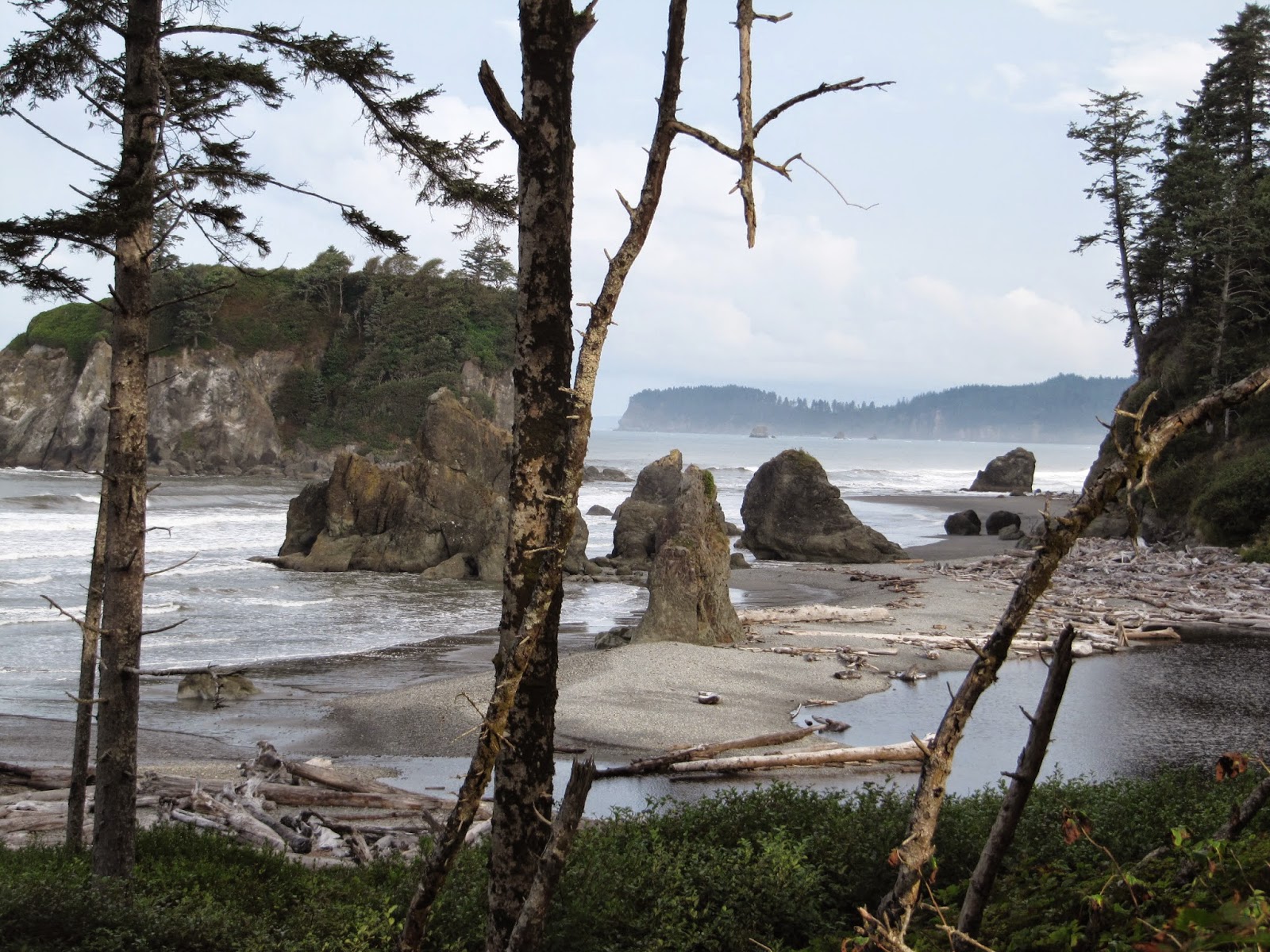Olympic National Park in the northwestern corner of
Washington might not appear on too many winter vacation agendas, but it’s the
season when the park shows its more dramatic side. Sure,
you’ll run into wet
weather, but the payoff in solitude and tranquility is worth it. There’s snow
in the mountains, wild waves along the beaches, and the rainforests are never
greener.
 |
| Ruby Beach |
Most of the winter sporting activity is centered at
Hurricane Ridge with skiing, cross-country, snowshoeing, and sledding. The road
is open on weekends only (weather permitting) and all cars are required to
carry chains. On the other hand, the lower altitudes in the park including the
rainforests and beaches, receive only occasional snow but plenty of the damp
stuff. The wet season brings out the
green lushness of the mosses and lichens making a hike through the Hoh or
Quinault rainforests a drippy, but beautiful experience. Pacific Ocean storms blow through frequently delivering
spectacular waves for storm-watching and beachcombing along the coast.
 |
| Lake Crescent Lodge |
One of the major highlights of a winter visit to the park
is enjoying the indoor comforts of the lodges. While booked full in the busy
summer months, reservations are much easier to obtain and the prices are
reduced during the winter season. Sol Duc Hot Springs Resort is closed during
the winter, but Lake Crescent Lodge is open until December 31, and Lake Quinault
and Kalaloch Lodges are open year round.
Lake Crescent Lodge dates back to 1916, and enjoys an
idyllic setting on the shores of a glacier-carved lake ringed with forests and
mountains, about 18 miles west of Port Angeles. The Main Lodge features a lobby
with a stone fireplace, a cozy sunroom, a wood-paneled dining room overlooking
the lake, and rooms on the second floor with great views, but shared bathrooms.
The property offers a variety of other
accommodations to choose from including the historic Singer Tavern Cottages and
the Roosevelt Cabins as well as more modern motel-like rooms.
The Roosevelt
Cabins are especially popular with guests because of their lakeside setting and
fireplaces. While the rest of the lodge closes at the end of the year, these
cabins remain open on weekends-only throughout the winter season.
 |
| Kayaks awaiting summer guests at Lake Crescent |
Further south and just outside the park boundary is
another rustic, lakeside inn, Lake Quinault Lodge. Built in 1926 by the same
architect who designed Old Faithful Lodge in Yellowstone, it has an expansive
front lawn leading down to the lake and a warm and inviting lobby with a large
brick fireplace. In addition to rooms in
the main lodge, there is a more modern building with an additional 36 rooms as
well as an indoor pool and sauna.
 |
| Lake Quinault Lodge |
The lodge’s dining room is named after
Franklin Roosevelt who lunched here in 1937. He must have enjoyed the meal and
view as he signed the bill creating Olympic National Park only a few months
later. Winter specials offer room rates equivalent in price to the average Motel
6.
 |
| Lobby, Lake Quinault Lodge |
 |
| Driftwood brought in during storms |
The Pacific Ocean coast can be an exciting place in the
winter when storms bring in blustery winds and crashing waves. There’s no better place to enjoy the action
than the Kalaloch Lodge, perched on a bluff on the west side of the park. There are rooms in the wooden, rustic main
lodge as well as cabins with fully stocked kitchenettes. The dining room, also
open year round, serves up Northwest cuisine accompanied by a sweeping ocean
view. With easy access to beaches, a winter visit means great beachcombing and
storm-watching. To accommodate guests, the lodge offers a special Brave the
Storm package that includes ponchos, hand warmers, hot chocolate, and
peppermint schnapps.
To learn more about rates and seasonal packages, or make
reservations at Lake Crescent and Quinault Lodges, check out www.olympicnationalparks.com. The Kalaloch Lodge website is www.thekalalochlodge.com.
It should be noted that these park
lodges are not suitable for guests addicted to wifi, cell phones, and big
screen tv. Instead, the simple pleasures of sitting in front of a roaring fire,
curling up with a good book, or working a jigsaw puzzle prevail. When visiting
the park during the winter months, it’s always prudent to check weather and
road conditions in advance.












































